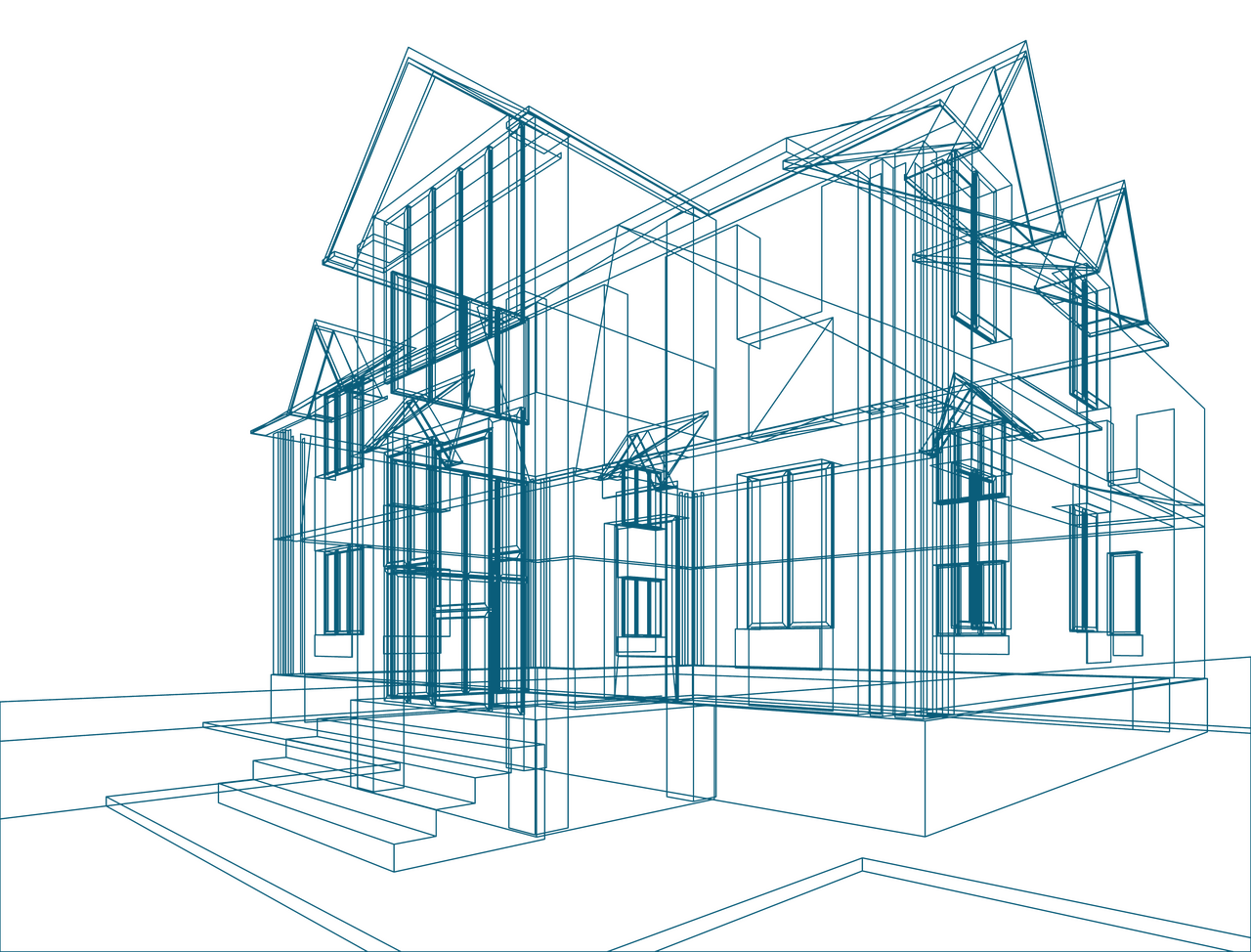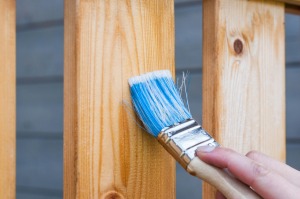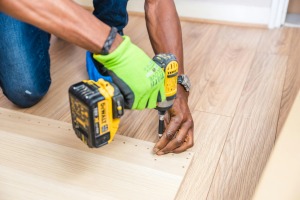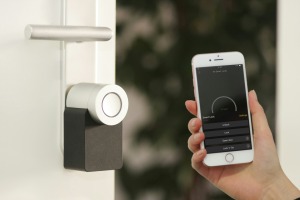


Market report
The Future of Home Improvement
The European Home Improvement Monitor reveals consumer behavior, spending trends, and market dynamics. With 26,400+ interviews annually, it offers data-driven insights into the evolving home improvement sector.
Blogs I published 02 August 2024 I Dirk Hoogenboom
7 Home Improvement Industry Trends To Watch in 2025
Remember the thrill of waking up to your fully renovated living room? Or building that pull-out spice rack from scratch? Or realizing it took too long to get a new nightstand into the bedroom? Of course you do. Because home improvement isn’t a fad or a hobby – it’s a personal journey that reflects our evolving lifestyles and aspirations. From grand renovations to small DIY-projects, homeowners are always looking to transform a living space into a home, and the industry needs to keep up.
Online Orientation
The pandemic supercharged digital-first shopping, particularly in the home improvement sector. As we adapted to an increasingly online environment, physical stores took quite a hit with customers turning to click-based purchases. While the return to physical stores has seen a rebound, the lasting impact of online shopping is undeniable. Today’s homeowners are increasingly tech-savvy, relying on online resources to explore product options, compare prices and seek inspiration for their projects.
Whether shopping in-store or online, they now come equipped with product knowledge and clear brand preferences that leave little room for impulsive buying. Although the rapid growth of online sales has slowed post-pandemic – 48.6% in 2021, 46.6% in 2022, and continues a stable decrease – the integration of digital channels remains essential for businesses to thrive.
Buying Behavior
This shift to online purchases, for example, clearly seeps into customer habits and behavior. While brick-and-mortar DIY-stores remain a popular choice, online shopping has – as we’ve already stated – exploded in recent years. Fueled by the convenience of browsing and purchasing from home, online sales in DIY have seen unprecedented growth. However, this rapid expansion is now leveling off as consumers return to physical stores and growth is returning to a slower pace and gradual tempo (47% in 2021, 48% in 2022, 47% 2023, 45% 2024). While many homeowners still prefer specialized stores for their purchases, be it power tools or paint cans, our research suggests they’re actually decreasing in popularity and shares (a drop from 12% in 2021 to 10% as of 2024). This, in combination with hiring professionals – also reliant on specific shopping strategies – is impacting industry fluctuation.
DIY vs. DIFM
The age-old conundrum – rolling up your own sleeves to tackle a home improvement task or picking up the phone and hiring a professional – is becoming increasingly complex. For years, we experienced a clear preference in do-it-for-me projects, with a steady affinity towards DIY; especially considering European demographics. But when COVID hit, we all became a little handy, until the tables turned completely and, suddenly, homeowners handled home improvements all on their own – from paint jobs to backyard decks. With life gradually returning to normal, the appeal of outsourcing these tasks is coming back (we’re seeing a slight increase from 37.2% to 38.6%). Factors like time constraints, lack of expertise or a plain desire for a guaranteed outcome could be driving this, but there are also potential roadblocks: a labor shortage leading to higher cost and longer waiting times.


Branding
Another trend we know all too well is getting caught between a beloved brand and a more affordable option. Traditionally, home improvement was dominated by A-brands, big names synonymous with quality and reliability (Bosch, Velux, Grohe, Pattex…). But the playing field is changing. Year after year, private labels – formerly considered a considerable step-down – have actually stepped up significantly, improving quality and features of their products, ultimately offering comparable results, at far more affordable prices. The customers took notice, with 53% overall displaying a positive opinion of them, France and The Netherlands especially (63% and 60%). This increased trust – enforced by social media in both quality and inspiration, and a strong e-commerce interaction, both consequences of the online revolution – is forcing everyone to up their game, so the gap between heavy-hitters and affordable alternatives is narrowing, even with A-brands dropping their prices. Caught in the middle are B-brands – they face increased pressure to attract consumers, still choosing between either perceived value of private labels or established trust of A-brands for home improvement projects.
DIY-stores Broadening Their Portfolio
Once seen as the exclusive domain for weekend warriors, home improvement stores are undergoing a transformation too; we’re seeing an expansion in product offerings across all aisles, catering to a broader customer base. Professionals ranging from small contractors to independent handymen are increasingly becoming regular customers, drawn by the convenience and wide range of products (i.e. professional-grade tools, equipment and materials). This shift goes hand-in-hand with an increase in do-it-for-me tasks in home improvement. As more homeowners opt for professional services, the demand for professional-grade tools and materials increases. By catering to both DIY enthusiasts and trade professionals, home improvement stores can position themselves as one-stop shops for all home improvement needs.
Smart-Home Integrations
With tech drastically impacting our everyday life, it seems like everything nowadays is smart – our phones, cars, even health devices. It’s no surprise that our homes are getting smarter too. From controlling lights and thermostats to voice commands and AI-assistants, home improvement is becoming more and more innovative, so keep a lookout. This burgeoning industry presents significant opportunities for professionals, retailers and manufacturers alike. As consumer demand continues to rise, the potential for growth and innovation is immense.


Sustainability
Creating eco-friendly living spaces is essential to combat climate change and, in the past, we’ve noticed a rapidly growing base of green homeowners. Now – the enthusiasm is waning. This is mostly due to the recent energy crisis, heavily affected by the Russo-Ukrainian war, but has a lot to do with the pace of early adopters. Solar panels, green roofs and renewable materials didn’t come cheap, and still don’t, so those that could have invested in them – already have. The rest can’t keep up. So even with the energy crisis gradually stabilizing, we’ve noticed consumers losing interest in making their homes sustainable, thanks to both high prices (discouraging an overwhelming 40% of consumers) and a decreased sense of urgency.
Outlooks
The home improvement market is expected to maintain a steady pace in the coming years, without experiencing significant growth or decline. While the pandemic-fueled surge in smaller, decorative projects is decreasing, we’re seeing a shift towards larger-scale renovations and construction work. Q1 2024 saw a surge in spending by 19% and households expected to start a project increased by 6% in Q2 2024 (jumping from 17% to 23%), with Italy and Poland expected to spend the most on home improvements (32% and 31% respectively), as opposed to Germany and Sweden with 17% and 18% respectively.
A key factor influencing this is the current state of the housing market. A lack of movement, or “locked” flow in the housing dynamic has a lot to do with a drop in new build. With rising home prices and interest rates acting as tangible barriers, many homeowners are choosing to stay put rather than relocate. This prolonged residency is driving demand for renovations and upgrades to existing homes, from bathroom and kitchen remodels to additions and energy efficiency improvements.
While the lack of housing mobility presents challenges for the overall real-estate market, it creates opportunities for the home improvement industry. As homeowners invest more into their current properties, we can expect a sustained demand for renovation services and products.
Conclusion
The home improvement industry is undergoing a period of significant transformation. The shift from impulsive purchases to informed decisions, driven by online research, is reshaping the retail landscape. While sustainability remains a priority, the initial charge has cooled, showing a lack of interest in eco-friendly upgrades.
The way we shop for home improvement products has evolved, with a balanced blend of online and in-store experiences. The rise of professional services has created new opportunities for DIY-stores to expand their customer base. Simultaneously, the battle for brand loyalty intensifies as consumers weigh the benefits of established brands against the allure of affordable private label options.
Amidst these changes, the housing market plays a crucial role. With limited mobility, homeowners are investing more in their existing properties, driving demand for renovations and upgrades. This trend, combined with the growing adoption of smart home technology, presents a promising outlook for the industry.
Stay ahead of the competition! Discover our detailed market insights and forecasts in exclusive webinars and blog content.
Home Improvement Consulting Services for You
We provide research and insights to help brands stay ahead in the home improvement sector.
Market Size
Assess the growth of the home improvement market and forecast industry demand.
Pricing
Develop competitive pricing strategies to maximize profitability in the evolving home improvement industry.
Product Development
Leverage consumer trends to create innovative home improvement products that meet market needs.

Read more

Fresh Insights Await
Our relevant reports
Delve into the newest findings across various market segments, crafted for a cutting-edge overview. Explore our insightful reports, brimming with up-to-date data, trend analyses, and in-depth examinations, all tailored to provide you with a comprehensive understanding of the current market dynamics.
Construction
Home Improvement
Installation
Special reports













